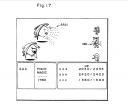Final Fantasy V: In Comparison to its Contemporaries
Final Fantasy V was released in 1992 in Japan, but didn’t get a North American release until 1999, when Final Fantasy VIII was already out. As such, Americans didn’t see it as a new release, or even as a nostalgia item. Its main audience may well have been completists like myself. Eventually the publishers would start pandering to completists even more, adding features to track what percentage of the treasures in the game you had collected and suchlike. (And really, without that 100% treasure-collection rate to aim for, very few of the treasure chests in the game are worth opening. Most of them yield things that you can buy from a shop with the proceeds from a single encounter.) Such things were included in the later remakes of the earlier games, but not in the version of FF5 that I’m playing.
So there are really two contexts for this game: Japan in 1992 and the West in 1999. In 1999, the big RPG titles in America were Baldur’s Gate and first wave of MMO’s, like Everquest and Asheron’s Call. Diablo was a couple of years old, and its influence was still strong: the emphasis in the RPGs of the day was on realtime action, with no hard separation between exploration and combat modes. Also, support for multiplayer play over the Internet was rapidly becoming a mandatory bullet point, even in games really not suited for it.
I haven’t played a lot of Japanese RPGs, but it seems to me that they were developing quite differently at that point. FF8 did a lot of experiments with gameplay (some of them unsuccessful), but still used essentially the same ATB system as FF5, modulo changing camera angles. Pokémon came out very close to this time, and has mechanics very similar to an early turn-based Final Fantasy. Pretty much the only thing separating FF5 from other Japanese RPGs circa 1999 was the SNESy graphics.
So it seems like FF5, at the time of its American release and Japanese re-release, would have seemed more retro in America than in Japan. Indeed, the trends I speak of in Western RPGs were already starting at the time of FF5‘s original release in 1992, the year that saw Ultima VII put combat and exploration in a unified realtime environment (which Dungeon Master did five years earlier).
But then, it kind of depends on how you define “RPG”. I noted before a bit in Metal Gear Solid 2 where the game refers to itself as “a kind of role-playing game”. I’ve seen the Zelda series classified as RPGs; if that counts, then they’ve been doing realtime integrated stuff since 1986, a year before Dungeon Master. I wouldn’t classify either of these things as an RPG — to me, the term basically means “imitates the mechanics of Dungeons & Dragons“, which is to say, stats and experience points and levels and so forth, and everything determined by die rolls modified by these figures. Notably, my notion of “RPG” has nothing at all to do with playing a role. And to the Japanese, who speak an entirely different language — well, who can say?
 Comments(0)
Comments(0)